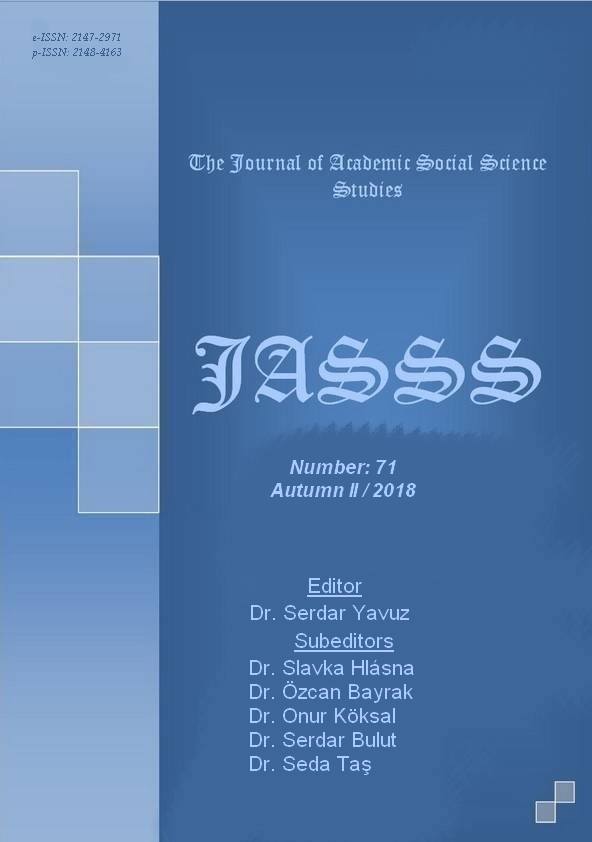MÜHENDİS ADAYLARININ PROBLEM ÇÖZME STRATEJİLERİNİN RUTİN FİZİK PROBLEMİ ÇÖZME BECERİLERİ ÜZERİNDEKİ ETKİSİNE YÖNELİK BİR YAPISAL EŞİTLİK MODELLEME ÇALIŞMASI
Author :
Abstract
Temel fizik derslerinde öğrencilere öncelikle temel fizik kavram ve ilkelerini sonra da bu kavram ve ilkeleri problem çözmede kullanabilmeyi öğretmek hedeflenir. Çünkü öğrenciler fizik problemlerini çözebildiği takdirde fiziği öğrendikleri düşünülür. Oysa problem çözme davranışı üzerine yapılan araştırmalar, öğrencilerin problemi analiz etmeden matematiksel ayrıntılara girdiklerini, amaçsız biçimde formülleri hatırlamaya çalıştıklarını ortaya koymaktadır. Bu durum fizik derslerinde problem çözme davranışının başlı başına bir süreç olduğunu gösterir. Çünkü bir fizik problemini çözmek sadece verilenleri formülde yerine koymaktan ibaret değildir. Bu süreçte ise karşımıza öğrenciye kolaylık sağlayan problem çözme stratejileri çıkmaktadır. Bu süreci anlamada öğrencilerin fizik derslerinde problem çözme sürecinde öğrenciye rehberlik eden problem çözme stratejilerinden hangilerini kullanarak problem çözmeye çalıştıklarını belirlemekle birlikte hangi stratejilerin işe yaradığını tespit etmek de önemlidir. Bu araştırmanın amacı problem çözme stratejilerinin rutin fizik problemlerini çözme becerisi üzerine olan etkisini yapısal eşitlik modellemesi yoluyla incelemektir. Bu amaçla Necmettin Erbakan Üniversitesi Mühendislik Mimarlık Fakültesinin farklı bölümlerinde öğrenim gören 195 öğrenciye “Fizikte kullanılan problem çözme stratejileri ölçeği” uygulanmıştır. Beraberinde ise 5 rutin mekanik problemi açık uçlu olarak sorulmuştur. Toplanan veriler ilişkisel tarama modellerinden Yapısal Eşitlik Modellemesi yöntemi ile analiz edilmiştir. Araştırma sonuçları fizikte kullanılan problem çözme stratejilerinden “problemi anlama” ve “dikkat toplama” stratejilerinin rutin fizik problemlerini çözme becerileri üzerine anlamlı etkisi olduğunu ortaya koymuştur.
Keywords
Abstract
The primary purpose in basic physics lessons is to teach students basic physics concept and principles, then to teach them how to use these concepts and principles in problem solving because it is believed that students learn physics as long as they are able to solve physics problems. However, researches conducted on problem solving behavior show that students enter into mathematical details without analyzing problems and they try to remember formulas purposelessly. This situation shows that problem solving behavior in physics lessons itself is a process because solving a physics problem is not only inserting data in a formula. In this process, we encounter strategies which help students in problem solving. For understanding this process, it is important to determine which strategies work for the students by using the problem solving strategies that guide the students in the problem solving process in physics courses besides to determine which problem solving strategies that students use. The purpose of this research is to examine effects of problem solving strategies on solving word physics problems through structural equation modelling. For this purpose, “The Scale of Problem Solving Strategies Used in Physics” was conducted on 195 undergraduates who were studying in different departments of Necmettin Erbakan University Faculty of Engineering and Architecture. Five open-ended word mechanical problems were asked within this scale. The collected data were analyzed using Structural Equation Modelling, which is one of the relational screening models. The results of the research show that the problem solving strategies used in physics including “understanding the problem” and “concentrating on the problem” have considerable effects on word physics problem solving skills.





